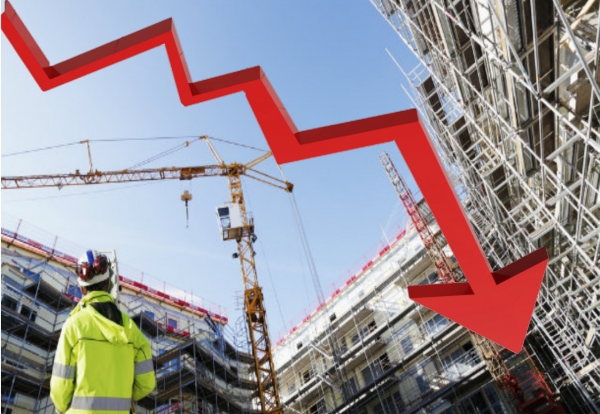The Steel Curtain: How One Governor’s Legal Battle Against Tariffs Could Lower Your Home Costs
**The Battle Against Barriers: California Takes on Tariff Policy**
Is America witnessing a turning point in trade policy? California Governor Gavin Newsom has launched a legal challenge against Trump-era tariffs, arguing these import taxes have dramatically inflated prices of goods and materials essential for home maintenance, property improvement, and business operations across the Golden State and beyond.
The dust of economic policy often settles far from Washington, landing squarely on kitchen tables and small business ledgers. These tariffs—particularly on steel, aluminum, and lumber—have quietly added hundreds, sometimes thousands of dollars to the cost of owning a home or running a business.
**What Happens When Tariffs Hit Your Roof?**
Is your home repair bill higher because of trade policy? The connection between international trade disputes and the cost of fixing your leaky roof might seem distant, but the line runs straight and true. When duties on imported building materials rose, so did the price tags on everything from lumber to nails to steel beams.
A sheet of plywood that once cost $15 now commands $30 or more. The aluminum in your gutters? Nearly doubled in price. The steel in your foundation? Up 40% in many markets. These aren’t abstract numbers—they translate directly to higher costs when storms damage homes or when families seek to add a room for a growing household.
Insurance companies, never ones to absorb costs they can pass along, have responded predictably. As replacement values climb, so do premium amounts. The average California homeowner now pays nearly 20% more for the same coverage compared to pre-tariff times.
If Newsom’s lawsuit succeeds, analysts project building material costs could drop by 15-25% over time, potentially easing pressure on both repair bills and insurance rates.
**How Do Small Businesses Weather the Tariff Storm?**
Is your local hardware store or restaurant feeling the pinch? Small business owners stand at the crossroads of these economic forces, caught between rising costs and price-sensitive customers.
Take Maria Cortez, who runs a family construction company in Sacramento. “Our bids have to be higher because our supplies cost more,” she explains. “Some clients walk away, thinking we’re price-gouging, but our margins are actually thinner than before.”
Commercial property insurance, already a substantial line item for businesses, has climbed alongside building costs. A restaurant owner replacing kitchen equipment or repairing fire damage faces not just higher material costs but also increased insurance premiums reflecting those new realities.
The ripple effects spread through entire communities. When small businesses struggle with higher operational costs, they hire fewer workers, postpone expansions, or—in the worst cases—close their doors.
**The Legal Battle Lines: Constitution vs. Tariffs**
Is this lawsuit more than political theater? The legal action targets a specific claim: that the tariffs imposed under Section 232 of the Trade Expansion Act exceeded presidential authority and failed to demonstrate legitimate national security concerns.
“These tariffs were imposed under the guise of national security, but they’ve become a permanent tax on American families and businesses,” Governor Newsom said when announcing the lawsuit. “We’re seeking relief for millions of Americans paying artificially inflated prices.”
The litigation faces significant hurdles. Courts have historically granted the executive branch wide latitude in trade matters. Legal experts suggest the case could take 12-18 months to wind through federal courts, with possible appeals extending the timeline further.
**What Do the Experts Say About Tariff Impacts?**
Is there consensus among economic analysts? Insurance industry specialists point to a direct connection between material costs and coverage prices.
“When the cost to rebuild or repair properties increases, insurance premiums must adjust accordingly,” explains Dr. Elaine Wong, chief economist at the Pacific Insurance Institute. “It’s simple math—if replacing a damaged home costs 20% more, premiums will reflect that reality.”
Economic analysts from across the political spectrum agree that tariffs function essentially as taxes paid by consumers and businesses, though they differ on whether such measures serve broader national interests.
Robert Shiller from the Anderson Economic Research Center notes: “The data is clear that these particular tariffs created price increases that outweighed any benefits to domestic manufacturers. American consumers have effectively paid billions for minimal domestic job creation.”
**The Road Ahead: What Happens Next?**
Is relief on the horizon? For homeowners and businesses feeling the squeeze, the timeline for potential change remains unclear.
The lawsuit will likely progress through federal courts over the coming year. Meanwhile, Congress could act independently to modify or remove the tariffs, though the current political climate makes such action uncertain.
For now, construction costs remain elevated, putting pressure on homeowners and businesses alike. Insurance companies continue to price their policies based on current replacement costs, not speculative future decreases.
Yet this legal challenge represents something significant—a recognition that trade policy isn’t merely an abstract economic concept but a force that touches kitchen tables, small business balance sheets, and family budgets across America.
As one observer of American life once noted, the true measure of policy isn’t found in Washington pronouncements but in the daily lives of citizens. By that measure, these tariffs have fallen heavily indeed on the shoulders of ordinary Americans—and whether through courtrooms or congressional action, their weight may eventually lift.
And that’s the way it is.
Disclaimer: General Information & Accuracy
This blog provides general information and discussions about insurance and related subjects for informational purposes only. It is not intended as professional advice, including but not limited to financial, legal, or medical advice. We strive for accuracy, but laws, regulations, information, and best practices constantly evolve, and unintentional errors can occur. Therefore, we make no warranties about the completeness, accuracy, reliability, or suitability of the blog content. Always consult with a qualified professional for advice tailored to your specific situation. Any reliance you place on this information is strictly at your own risk.




